Can you freeze risotto? Making a perfect pot of risotto takes time and effort. If you’ve made too much, you have to store it in the fridge, where it’s good for only a couple of days.
What if you won’t be able to eat it within this period? Or if you want your perfect risotto for lunch on Friday, but can make it only on Saturday or Sunday?
That’s when the idea of freezing risotto comes to mind.
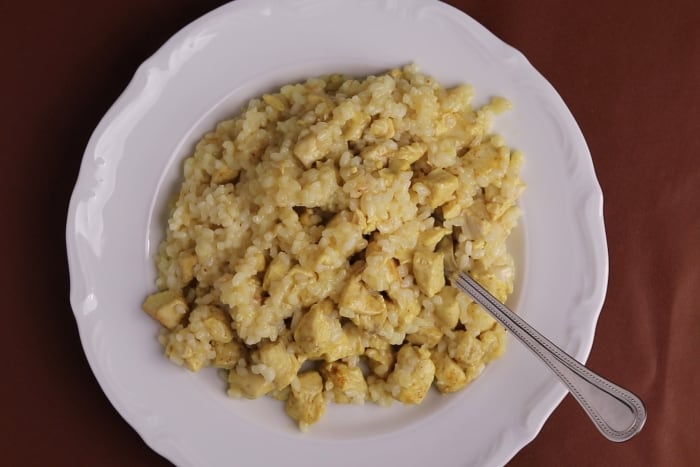
Can You Freeze Risotto?
I’m sure you know you can, but is it any good after defrosting and reheating? Well, that depends on both the recipe you’re using and your personal preferences.
When risotto cools down before freezing, some of the water content is lost due to steaming. That’s why it sticks together and is quite dry when you’re reheating it (see the video). The same thing happens to cooked rice. In addition, it often loses some of its creaminess too.
Does that make the frozen and thawed risotto taste much worse than a fresh one?
Not at all. The difference is there for sure, but it’s usually not that big of a deal. Plus, with a bit of extra work, you can fix the issues I highlighted.
If you’re willing to exchange some of the taste for the ability to freeze this dish, read along!
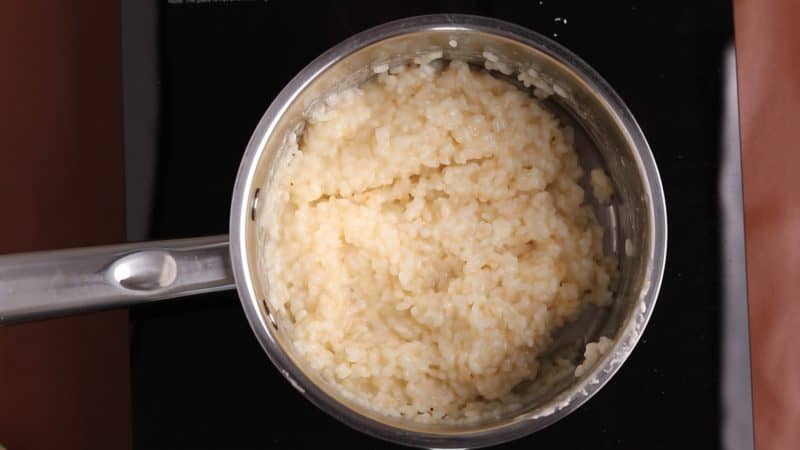
How To Freeze Risotto?
The sooner you freeze risotto after cooking it, the better. If you freeze it the same day it’s cooked, you can safely eat it within 2 to 3 days after thawing. If you’re a little late to the party and freeze it a day or two after cooking, you cook it the same day you thawed it.
The process of freezing is straightforward and goes exactly as you would expect it. Here’s what it looks like:
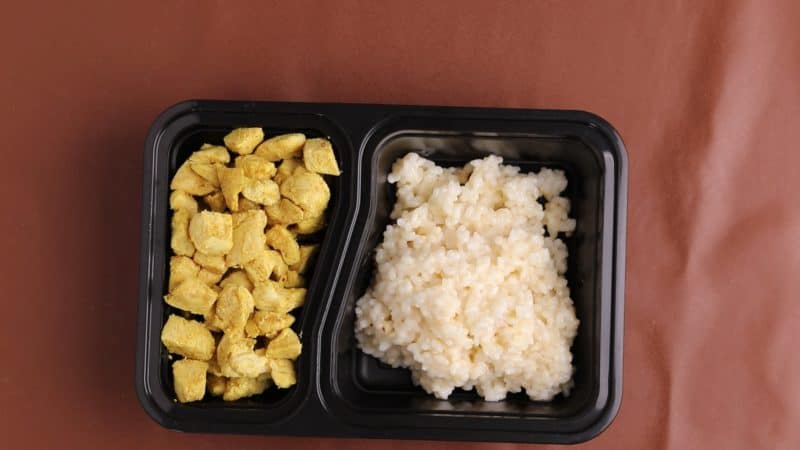
- Cool it down. Like with all cooked dishes, we start by letting it cool down a bit. You can leave it on the counter, or store in the pantry. If you have a giant pot of risotto, pour it into a cookie sheet, so it loses its heat more quickly. Make sure it gets to about room temperature in less than two hours.
- Portion the risotto. If you have more than you need for a single meal, divide the remains into several portions. This way, you can defrost one when needed, and there won’t be any leftovers after.
- Transfer to freezer containers or bags. I prefer airtight containers, but you can use resealable bags if you like. Just make sure they’re leakproof. Otherwise, you’re going to end up defrosting the freezer and cleaning up the mess, and that’s never fun. Alternatively, put the bag(s) in a container and leave them there until the risotto has frozen solid. This way, if things go south, you only need to wash the box.
- Freeze. Put the packaged portions into the freezer, and you’re done.
You can keep the risotto in the freezer for a couple of months for the best quality. Leaving it there for longer is fine (food-safety-wise), but I cannot guarantee it will taste that great.
In short, the sooner you eat it, the better.
The same freezing method works great for freezing other delicious dishes, such as baked beans, refried beans, or chili.
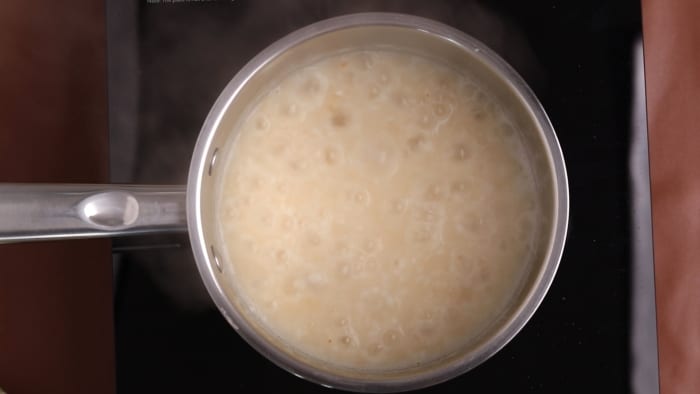
How To Defrost Risotto?
When it comes to defrosting risotto, there are a couple of options.
In the Fridge
To have the risotto fully defrosted for dinner, put the package in the refrigerator the night before.
If you decide to have the risotto for dinner before you leave for work in the morning, thaw it in lukewarm water in the fridge. The water speeds up the process a bit, and the dish should be thawed by the time you come home.
In the Microwave
If you need to make dinner now, but forgot to defrost the risotto, microwaving is an option.
Microwave it on the defrost setting in short increments (30 seconds tops), and try to break it down from frozen a bit further after each interval.
Also, pour a bit (like a teaspoon or so) of water on top every time it starts to get dry.
On the Stove
All you need for that is a non-stick pan, some water, and patience.
Add a couple of tablespoons of water, set the pan on low heat, and add the frozen dish. Once the outer layer defrosts, scrape it off, so the heat can thaw it further. Continue until the whole thing melts.
Pay close attention when defrosting this way, so the risotto doesn’t burn.
Please note that if you went with any other option than the fridge, you should reheat and cook the risotto immediately after thawing.
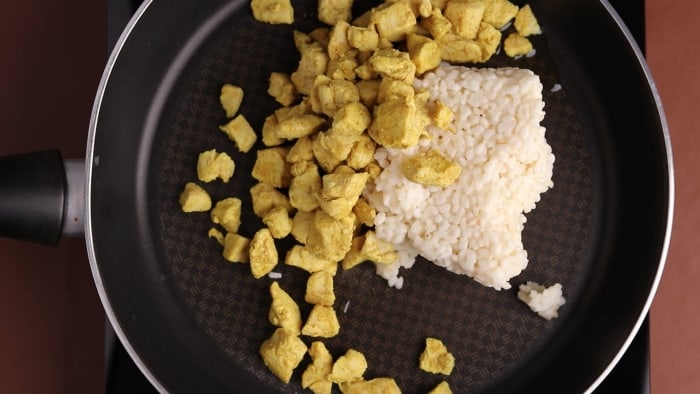
How To Reheat Risotto?
Once thawed, give it a good whisk to mix the ingredients. Now it’s time to reheat it.
You can do that in one of several ways:
Non-Stick Pan on the Stove
That’s how I do it and what I recommend you do as well.
Set the pan on medium heat, add some butter in the beginning, and stock or water while reheating to achieve the texture you’re looking for.
Taste it as you go to see if you’re on the right track.
Reheating this way is best because you have the most control over the dish, and you can adjust things as needed.
In the microwave
Like when thawing, microwave it in short, 30 to 45-second increments. Stir and add stock, butter, or water between increments.
It should be hot in 3 to 6 minutes on the lowest setting.
Putting it into the microwave for a couple of minutes without stirring and extra liquids will result in an extremely dry risotto. You don’t want that to happen.
In the oven
This method is hands-free, but it’s difficult to get good results consistently.
Use a greased oven-safe dish, add butter and some water/stock and cover it. If it doesn’t have a cover, use tinfoil.
Next, preheat the oven to 350-400 degrees Fahrenheit, stick the dish in and cook for 10 to 15 minutes (depending on the portion size).
If the risotto turns out dry, next time add more liquid or butter and see how it goes.
Again, it’s challenging to get it right, and it might take a few tries before you get decent results.
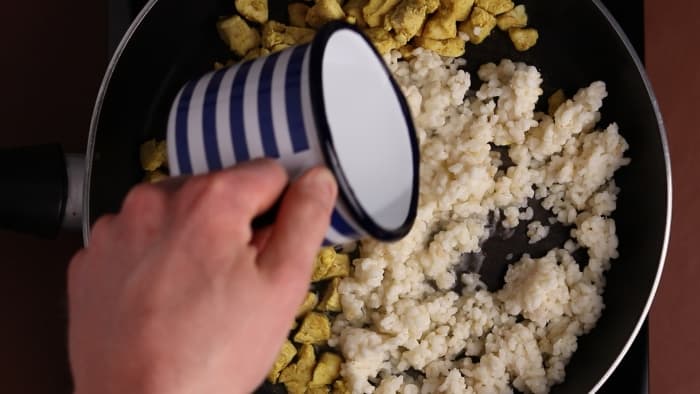
Tips for Reheating Risotto
Here are a couple of tips you might find useful if your reheated risotto doesn’t taste quite as good as you would’ve liked it.
- If the risotto is too dry, add more water/stock when reheating. And if you went with my recommendation and reheat it on the stove, adding too much is not an issue. If that happens, you can always keep the dish on the stove for longer to reduce the water.
- If it lacks the creaminess you’re looking for, add more shredded cheese when reheating. It should help the texture. If you’re using a slightly salty cheese, however, make sure you don’t overdo it. Otherwise, you’re going to end up with a super salty risotto, and that’s no good.
About the Author

Marcin is the managing editor of CanYouFreezeThis.com. He is making sure all the freezing info on this page is accurate and the posts easy to digest and use.